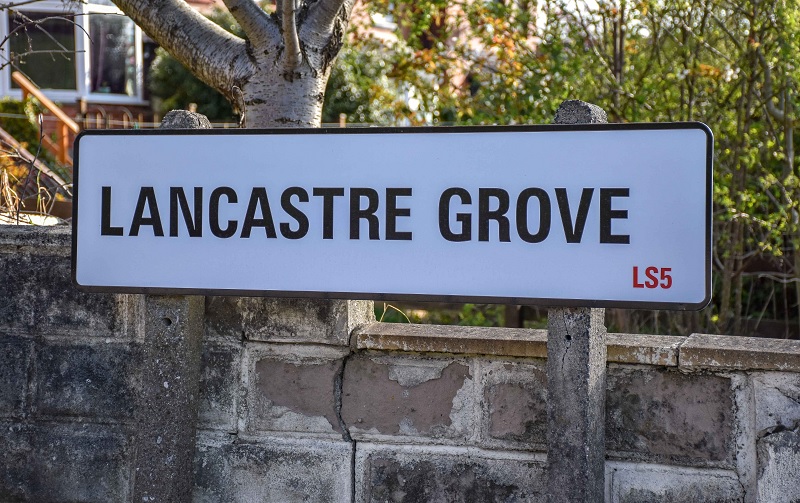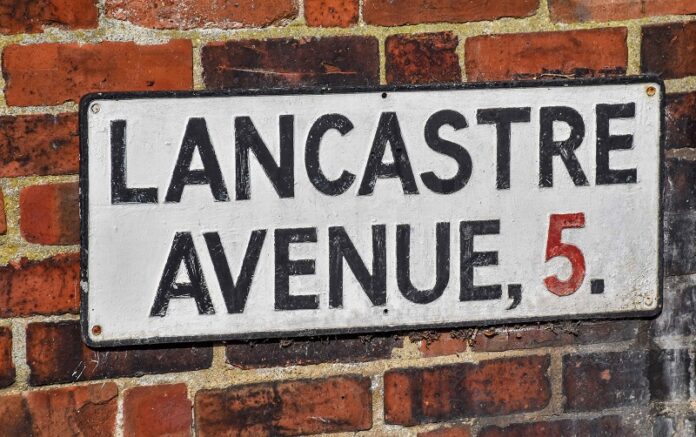Words & Photos: Mark Stevenson
Have you ever noticed how they spell Lancaster the ‘wrong’ way in West Leeds? It is spelt as Lancastre on the street signs.
I have often wondered why over the years, but never got round to finding out. But thanks to Number 11 I decided I needed to check it out now.
The land that Lancastre Grove/Avenue and Place (Lancastre Place is still standing but the street name is no longer used) are built on was once owned by James Brudenell, 7th Earl of Cardigan who led the Charge of the Light Brigade and who the Cardigan is supposedly named after.

William Firth rented the land from Lord Cardigan and it was made up of three fields known as Old Wither, Broom Bank and Laith Garth. There was a William Firth living at Low Fold, Bramley, in 1841 and he was a butcher. Maybe he was using the fields to fatten up the animals for slaughter?
If Lord Cardigan was on Facebook his relationship status would be “complicated”. He met his first wife Mrs Elizabeth Tollemache Johnstone whilst she was still married to her husband, Lt Col Christian Johnstone, had been a friend of Cardigan’s since childhood and it is said that he started wooing his friend’s new wife soon after the wedding.
He met his second wife Adeline Louisa Maria Kilderbee whilst still married to his first. There was an age gap of 27 years and she put up with his other affairs, even becoming friends with some of the women involved.
His second wife’s title was Adeline, Countess of Cardigan and Lancastre. She took the Lancastre part from her second husband the Portuguese Nobleman Don António Manuel de Saldanha e Lancastre, Conde de Lancastre.
Queen Victoria did not like Adeline very much, partly because of the affair she had with Cardigan and she liked her even less when she became Countess of Lancastre as Victoria liked to travel around Europe incognito using the title Countess of Lancaster.
Adeline scandalised society by wearing thick makeup and organising steeplechases through the local graveyard “and became everyone’s idea of a merry widow.”
She kept her coffin in the house and she would often lie in it, asking for opinions on her appearance. Her spending led to bankruptcy which forced the sale of many of her clothes, carriages and horses. She was often seen, locally, cycling clad in her first husband’s regimental trousers. She smoked cigarettes in public at a time when it was considered improper for a lady to do so.
She died at Deene Park on 25th May 1915 and was buried near her first husband in the Deene Parish Church. She must’ve stayed in people’s memories because assuming the Lancastres are named after him they were not built until the late 1920’s early 1930’s.
Read more on West Leeds history through Mark Stevenson’s regular Mark’s History posts here.

